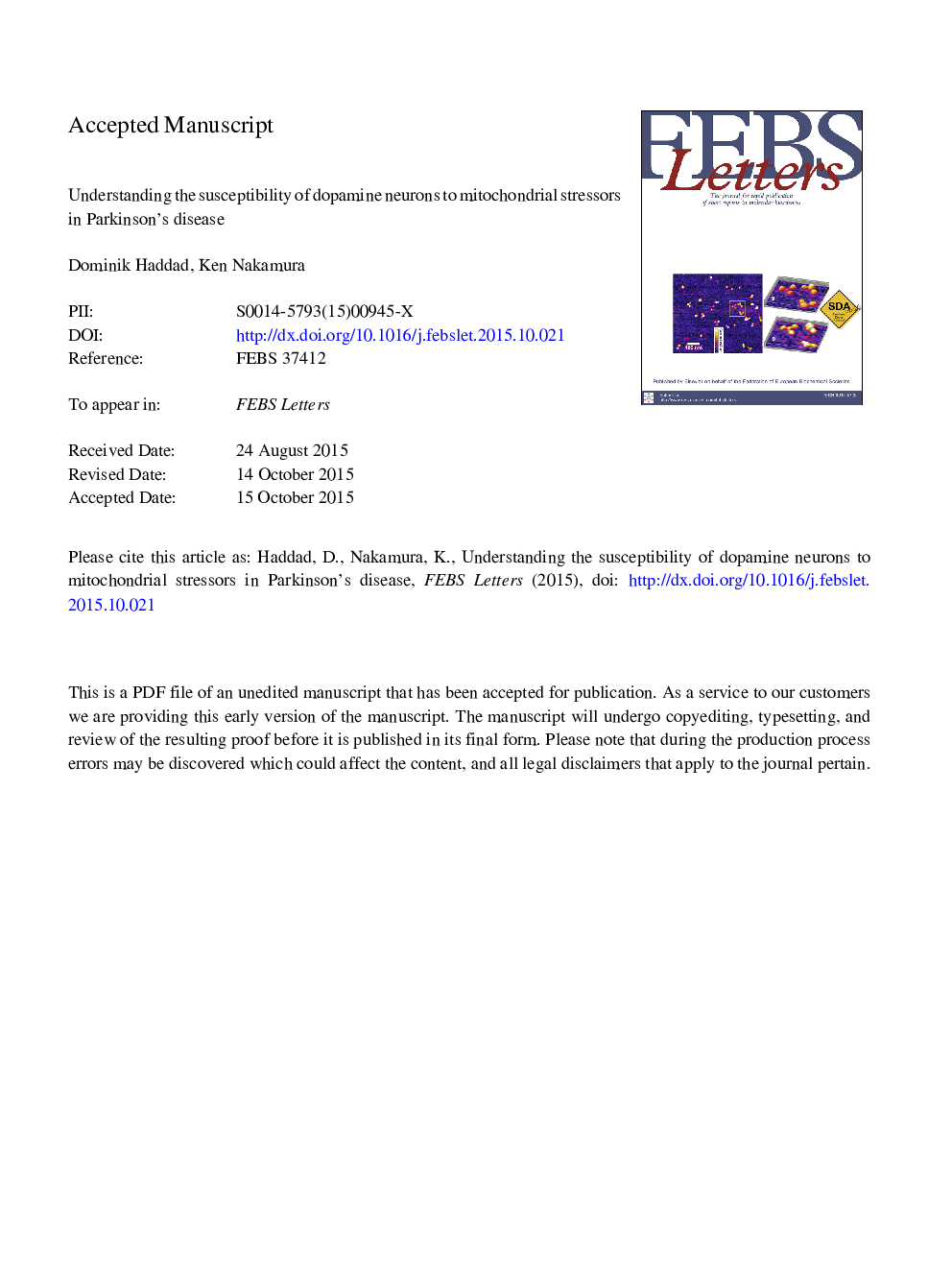| Article ID | Journal | Published Year | Pages | File Type |
|---|---|---|---|---|
| 2047405 | FEBS Letters | 2015 | 42 Pages |
Abstract
Mitochondria are undoubtedly changed in Parkinson's disease (PD), and mitochondrial functions are disrupted in genetic and pharmacologic models of PD. However, many of these changes might not truly drive neurodegeneration. PD is defined by the particular susceptibility of nigrostriatal dopamine (DA) neurons, but little is understood about the mitochondria in these cells. Here, we critically review the evidence that mitochondrial stressors cause PD. We then consider how changes in the intrinsic function of mitochondria and in their mass, distribution, and dynamics might synergize with an increased need for mitochondria and produce PD, and the importance of understanding how mitochondria contribute to its pathogenesis.
Related Topics
Life Sciences
Agricultural and Biological Sciences
Plant Science
Authors
Dominik Haddad, Ken Nakamura,
